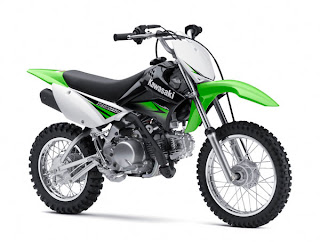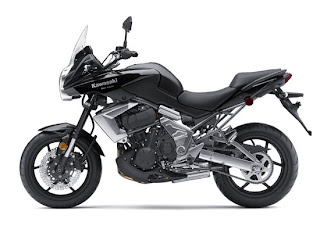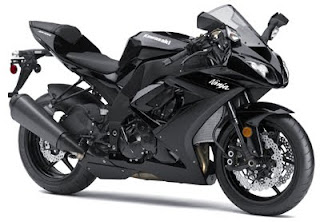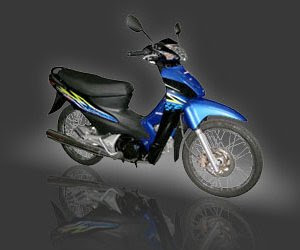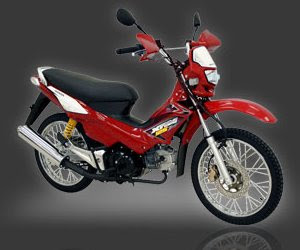With performance credentials that establish it as the hottest sportbike on the planet, the Suzuki Hayabusa is designed for serious sport riders who will settle for nothing less than the best. Its combination of unsurpassed power, crisp handling and superb aerodynamics creates the ultimate sportbike.
Engine Features of Suzuki Hayabusa:
- 1340cc, DOHC liquid-cooled engine with 16-valves, Twin Swirl Combustion Chambers provides 11% higher performance and smoother operation
- High efficiency curved radiator now features dual electric fans controlled by the ECM for increased cooling capacity. Oil cooler now has 10 rows cores for increased heat dissipation
- Ion plating treatment utilizing PVD (physical vapor deposit) method is applied to piston rings providing a smoother surface treatment for increased durability, reduced friction loss and reduced oil consumption
- Large volume 4-2-1-2 exhaust system with a large capacity catalyzer, dual triangular canisters and closed loop system that meets Euro 3 and Tier 2 regulations
- Lightweight aluminum alloy pistons feature a revised shape and a higher compression ratio of 12.5:1 for maximum performance in all conditions
- Lightweight titanium intake and exhaust valves with narrow 14 degree valve angle for high combustion chamber efficiency
- SCEM (Suzuki Composite Electro-chemical Material) plated cylinders minimize cylinder size and improve heat dissipation and new hydraulic cam chain tensioner for reduced mechanical noise
- S-DMS (Suzuki Drive Mode Selector) allows the rider to choose from three different engine settings depending on riding conditions or rider preferences
- Shot-peened chrome-moly steel connecting rods for maximum durability
- Slick shifting 6 speed transmission working in conjunction with an innovative back torque limiting clutch for smooth and controlled downshifts
- Suzuki SDTV fuel injection system with dual injectors per cylinder and ram air intake with large volume airbox
- Ventilation holes at the cylinder skirt for reduced pumping losses and increased performance
- Aggressive aerodynamic fairing design with low drag coefficient retains it's signature Hayabusa look and features an updated, muscular look to work with the new more powerful engine and updated chassis
- Bridged aluminum alloy swingarm features a new cross-sectional shape for increased rigidity and to cope with improved rear tire grip and increased engine output
- Fuel tank height is lowered to allow riders helmet to tuck in and windscreen height is increased for improved wind protection and optimum aerodynamic efficiency with the rider in place
- Fully adjustable inverted front fork featuring DLC coated inner tubes for minimal friction resistance and outstanding suspension performance over a variety of riding conditions
- Fully adjustable rear shock absorber with a 43mm piston and 14mm rod diameter Lightweight and rigid twin-spar aluminum frame minimizes weight while maintaining high torsional strength
- Instrument cluster features four analog meters for speedometer, tachometer, fuel gauge and water temperature with a S-DMS mode indicator, gear position indicator and adjustable engine rpm indicator
- LED taillight utilizes a double lens structure with a clear inner lens and a red outer lens for maximum visibility and a high quality finish
- Lightweight single piston rear brake caliper working in conjunction with a new larger 260mm rear brake disc
- Passenger seat and rear subframe are lowered for improved passenger comfort
- Radial-mount front brake calipers for maximum braking performance and allows for smaller 310mm front brake rotors resulting in reduced unsprung weight and improved handling
- Vertically stacked twin headlights provide increased light intensity, improved light distribution and match the elegant flow of the new Hayabusa styling
- Wheels mounted with high performance Bridgestone BT-015 tires for unmatched handling and control



